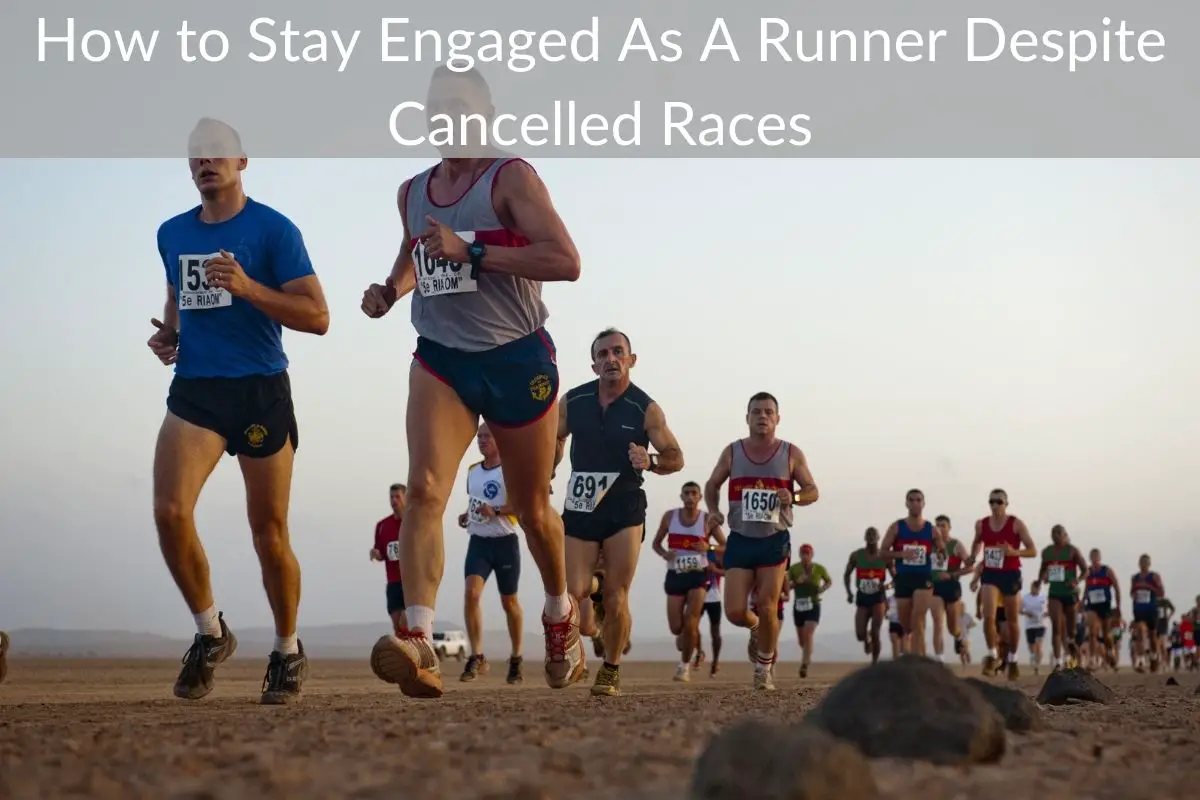Table of Contents
*This post may contain affiliate links. As an Amazon Associate we earn from qualifying purchases.

Runners from all over the world look forward to every season to train, prepare and eventually run the marathon. With the arrival of COVID-19, the plans of many runners were thwarted and they had to be creative to keep up with their training.
With the switch to virtual models, where registered runners walk a certain distance on their local paths or on the streets of their neighbourhood, some runners have no problem adapting to the new scheme. However, some runners were disappointed that the games they trained for were cancelled because of the coronavirus. In this article, I’ll give you tips on physical and mental health, how to stay motivated despite an uncertain marathon future, how to train safely at home, and tools to help you get the most out of your home training program.
Training safely
Although institutionalisation has been facilitated in many parts of the country, social distance is still important to prevent the spread of COVID-19. To exercise safely, runners must maintain an appropriate social distance (at least six feet between you and another runner/walker), wear a mouth guard and be alert when running in areas of heavy traffic. Finally, when running and practicing in areas of heavy traffic, it is essential to be alert and vigilant, whether attention is paid to pedestrians, cars or pets – and to follow the rules of the road.
Wearing a mask while walking is uncomfortable, but necessary – especially in areas with a lot of traffic. However, some mask options are better than others. For example, by choosing breathable fabrics that fit your face well and that are not too loose or too tight. Clean your mask after each use by throwing it in the washing machine or hand wash it with warm water and soap to protect you during your workout. Remove your shoes before you go in and wipe them with antibacterial wipes and/or spray them with alcohol to kill any germs. In addition, showering on the way home to get rid of sweat and dirt, as well as possible germs, can help keep you safe.
To save a marathon, consider running your marathon virtually. Even if you don’t walk with other people, you will certainly achieve your goals and share your results with your friends, family and loved ones in the same way.
Developing a sustainable plan
Developing a sustainable plan is essential when it comes to learning, especially now that everything has changed. As the COPID-19 landscape continues to change, best practice in public health and safety will become increasingly important – an adaptive approach is essential.
The first step in the development of a sustainable curriculum is to build the plan around specific and measurable objectives. These goals vary depending on you and are very individual. Think about how you want to start and how you want to end, and work backwards based on these factors to set your goals. For some people, it’s all about finishing the race, and they don’t care so much about their personal good (PR) or the time they need to finish the race. For others the goal is to run a certain number of kilometers per week, and for the most experienced riders the goal is to break the PR.
I set myself micro-objectives to motivate my clients. For example, we’ll do trial runs 5 km times, so they’ll have something to train for (since there’s obviously no run now), said Bruce Rymer, four-time Canadian running champion and running coach from Toronto. We do them every four to six weeks. It gives them a goal and not just a useless preparation for games that may never happen. The good thing about the 5 km distance is that it doesn’t take up a lot of space, so we can start training again in a few days.
After you have thought critically about where you started and where you want to see your end point, you write down a number of goals. Writing down goals helps us to remain responsible so that we have a better chance of achieving them. Don’t believe me, believe neurology. Research shows that people who write down (and detail) their goals are 1.2 to 1.4 times more likely to achieve the goals set (Murphy, 2018).
Another consideration is that your objectives should be measurable. Just the vague goal of running more often is not enough and will probably only make you fail. It is important to reformulate the objective so that it is feasible and measurable. For example, instead of saying you’d like to run more often, it’s useful to say: I want to walk four times a week for at least an hour on the paths behind my house.
Finally, it is also useful to be flexible in your plans and keep in mind that on some days you will feel more motivated than on others, and conversely, on other days you will feel much less motivated. We are only now beginning to learn more about the impact of this pandemic on the mental health of each and every one of us, and we will learn more about it over time. However, the experts agree on one point: You have to be good to yourself during this time and listen to your body and mind.
Obtaining and retaining motivation
One of the hardest things in any kind of training, whether it’s racing or something else, is staying motivated. Especially if it’s a race with clearly defined parameters for success (e.g. time targets based on your age group).
The first step to make sure you stick to the plan is to remember why you are participating in the event. We all start with a reason – and we can usually increase our level of motivation by being successful and achieving our goals. However, we run the risk of getting out of trouble despite our best intentions. Keeping a list of why you started your activity (and what you got out of it) can be an excellent motivational tool. Some of us run away to lose weight, to beat public relations, for family or for symbolic reasons (such as after a cancer diagnosis or to honor another person). Keeping this thought in mind as you stretch or warm up for your run can help keep you grounded.
As runners we know how important our health and training are. Regular exercise strengthens the immune system and reduces the risk of infections. So even in quarantine we do several exercises in our garden, our neighborhood, or even in the parking lot of an empty mall (with breaks or rehearsals), explains Tina Klein, MPA, founder of Balanced Running, a trainer and athlete of international level. The athletes we train follow their training plans with competition rehearsals in their neighborhood, train with breaks in parks with limited space, train safely while maintaining social distance, and publish their performance on social media.
In addition to the motivation and community spirit that social media provide, it is important to remember that numbers have power, and finding a responsible coach or partner can make things even more motivating.
I am a one-on-one trainer in the shop, which has allowed me to maintain the meetings with my customers and to guide them for the most part in this pandemic. I also text my clients every day to motivate them and just to see how they are doing, adds Rymer.
How devices and technology can help you achieve your goals
If you don’t walk outdoors, using a treadmill, stationary bike or exercise bike can be a useful way to keep track of your workouts and follow your favorite show, movie or book.
Put technology and smart devices at your service to help you achieve your goals more effectively. Many devices such as B. Smartwatches, Fitbits and others track your steps, exercise, calories burned, sleep duration/quality and more.
With some Fitbit models, you can track your route, analyze your performance on the go and play music without having a smartphone near you. Some applications also perform the same function, such as MapMyRun, RunKeeper, Nike Run, Adidas Running, Couch to 5K, Pacer, Strava, and others. These applications are useful for runners of all levels and are compatible with Apple and Android phones.
In terms of technology, Garmin and Strava are generally what all my customers use. Strava was a godsend during COVID-19 because my clients can hunt for virtual titles or trophies at different distances and speeds. Getting virtual titles and trophies can also be a great source of motivation, Rymer said.
Others did things differently while continuing to use the technology.
Some have become turning points in others (e.g. rowing, indoor cycling, other cross-training social media), some virtual races, some water races, said Klein. We have also hosted and operated AMRAPs in our safety zone, and provided zoom and social media training so that others can join us.
AMRAPs is a CrossFit term that means as many laps as possible or as many repetitions as possible, depending on the type of training you do.
Maintaining optimal mental health
Since the VIDOC-19 pandemic, many people have experienced changes in their state of mind and mental health. House arrest, involuntary homeworking, social isolation, lack of financial resources and other factors can significantly affect people’s mental health. For these reasons, it is more important than ever to prioritise and devote time to activities that have a positive impact on our mental health and well-being.
Running can have a crucial impact on mental health, especially for conditions such as anxiety and depression. Since the 1970s, researchers have been studying running as a treatment for mental illnesses such as depression. In one study, researchers compared flow-therapy with antidepressants in 160 participants with severe depression and/or anxiety disorders for 16 weeks, and flow-therapy was found to be effective (Lever-van Milligen et al., 2019).
A lot of people may have heard of Runner’s High, but is there any truth in it? The high of a runner is the feeling of excitement and euphoria after a race. It’s true, exercise releases endorphins, those are our wellness hormones. But there’s something else. After intensive training a person can feel relaxed. This is due to the release of a biochemical known as endocannabinoids. The body naturally produces these endocannabinoids, but they can mimic the same relaxing sensations that can be experienced with cannabis (Linden, 2020).
When it comes specifically to marathon running, the positive effects on mental health can be felt regardless of a person’s age or occupation. For example, the study compared the mental health of law students and psychology students after they started a neglected program. In a sample of 206 students, the researchers found a negative relationship between exercise and psychological stress (Skead & Rogers, 2016). People can reduce or even relieve psychological symptoms such as anxiety, depression and stress through regular exercise, including walking.
Conclusion
Staying active is good for your mental and physical health, especially when you are at home. Although COVID-19 has made running and marathons more difficult, it is more important than ever to maintain motivation for home training, training and goal setting. Marathons and similar events may be temporarily suspended, but will eventually return, even if they have to be modified for public health reasons.


